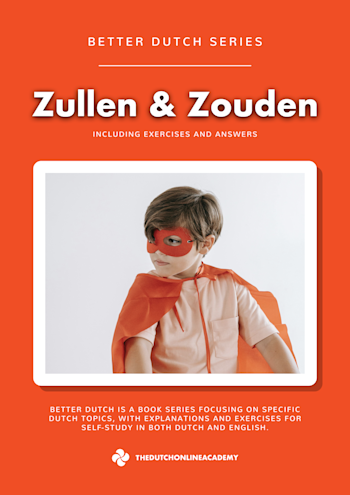Learn the theory
Describing an ongoing action in Dutch
For actions that are ongoing or were ongoing, you can either use the zijn aan het construction or a position verb + te + infinitive.
- Ik ben de hele dag aan het studeren.
- Ik zit de hele dag te studeren.
- I am studying the whole day.
We are going to talk about that last option in this article. Note that the two options have the same effect and that they are both very common in Dutch language. You can choose the construction you feel most comfortable with.
Position verb + te + infinitief
For ongoing actions, you can combine a position verb with an infinitive. You'll have to use the little word "te", right in front of the infinitive. You'll see this small word pop up everywhere in Dutch language. You can read more about it here.
A few examples:
- Ik lig te slapen.
- Ik zit een boek te lezen.
- Ik loop te zingen.
- Ik sta met mijn buurman te praten.
- De was hangt te drogen.
Note that the emphasise is not on the position you have during the action, but on the action itself. Sometimes, a certain position verb is used while the person doing the action is not even in that position. This is especially true for lopen and zitten.
- Je loopt te zeuren (while the person is sitting: Je zit te zeuren would also be correct).
- Hij zit te dromen (while standing: Hij staat te dromen would also be correct).
Of course you can also use this construction in the Dutch past tense. You can use imperfectum or perfectum, but in perfectum you'll have to use the double infinitive.
Imperfectum: ongoing actions in Dutch
- Hij lag op de bank televisie te kijken.
- Wij zaten in de kantine koffie te drinken.
- Ik stond op mijn trein te wachten.
- Willem liep de hele dag aan haar te denken.
Perfectum: ongoing actions in Dutch
- Hij heeft op de bank televisie liggen kijken.
- Wij hebben in de kantine koffie zitten drinken.
- Ik heb op mijn trein staan wachten.
- Willem heeft de hele dag aan haar lopen denken.
Some ideas to keep learning
Do you want to study some more? Why not check out our article about position verbs in Dutch? With free Dutch grammar exercises!
comments
Login to leave a comment



![Learn Dutch with The double infinitive in Dutch [list of auxiliary verbs included]](https://images.ctfassets.net/f8l4gy5qxe00/7fpaN2iBE3h1xS7LRL8c0h/3bbebedc080cbf7eece73424c8e3918f/The_double_infinitive.png?w=350&h=495&q=50&fm=png)